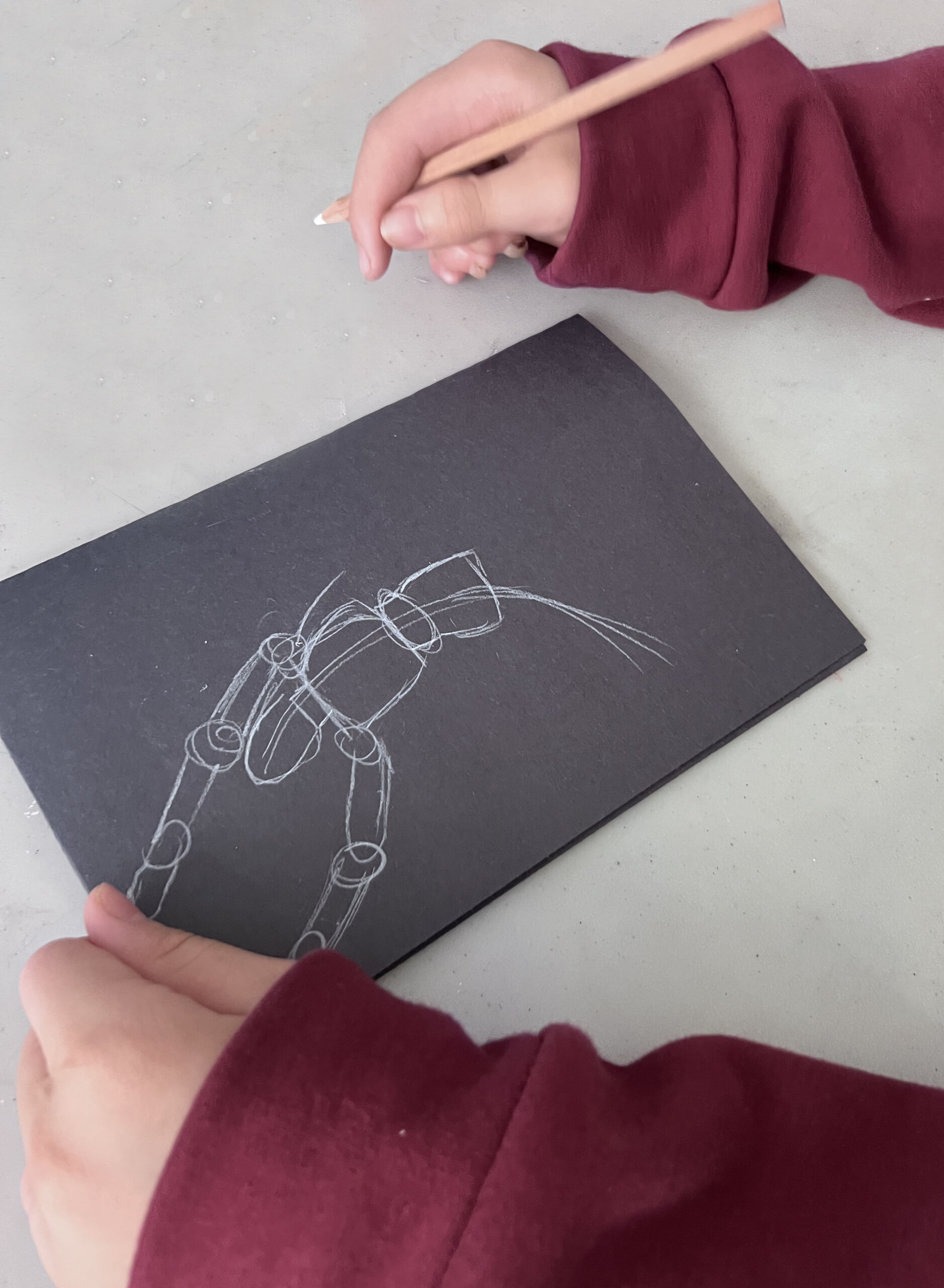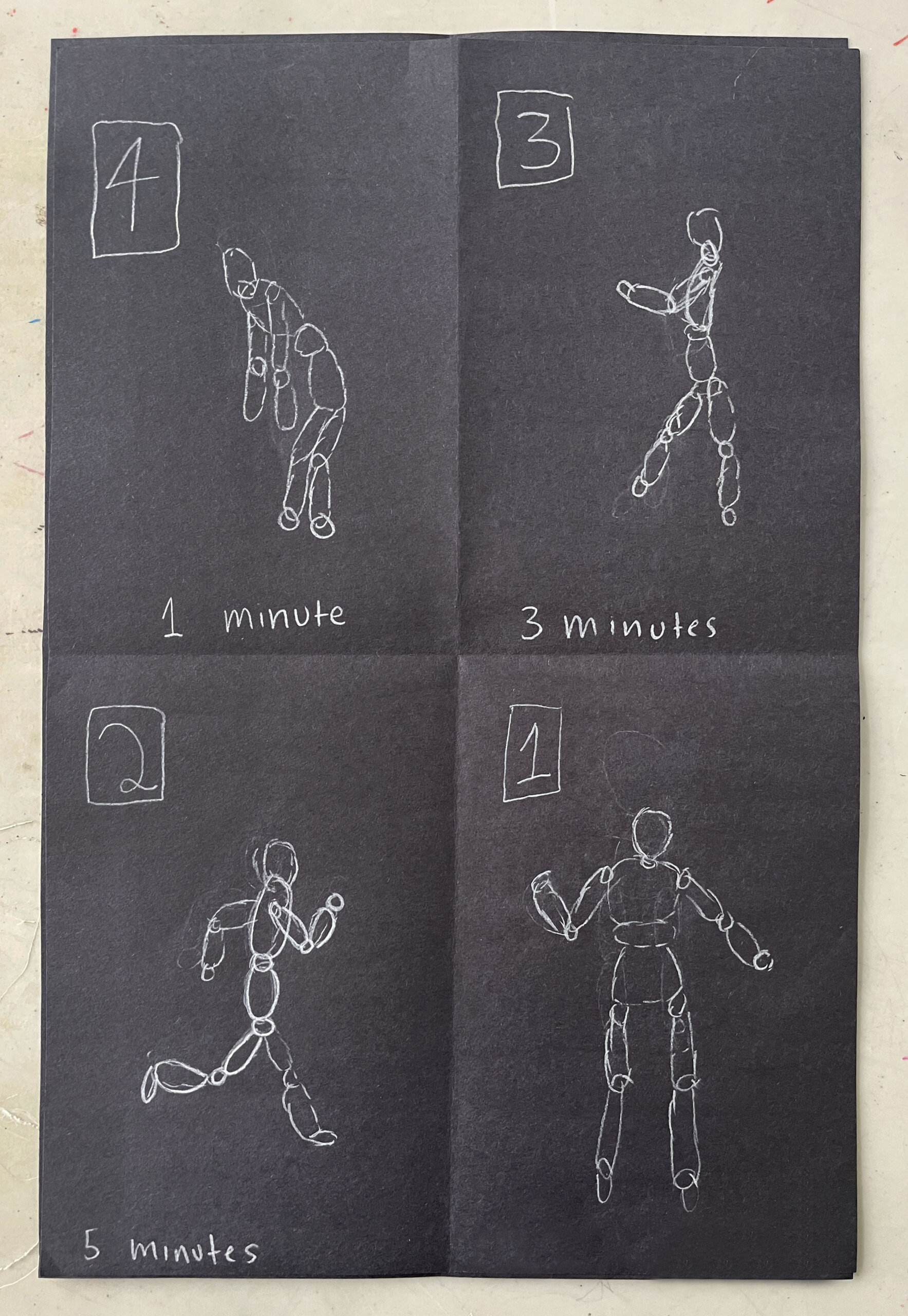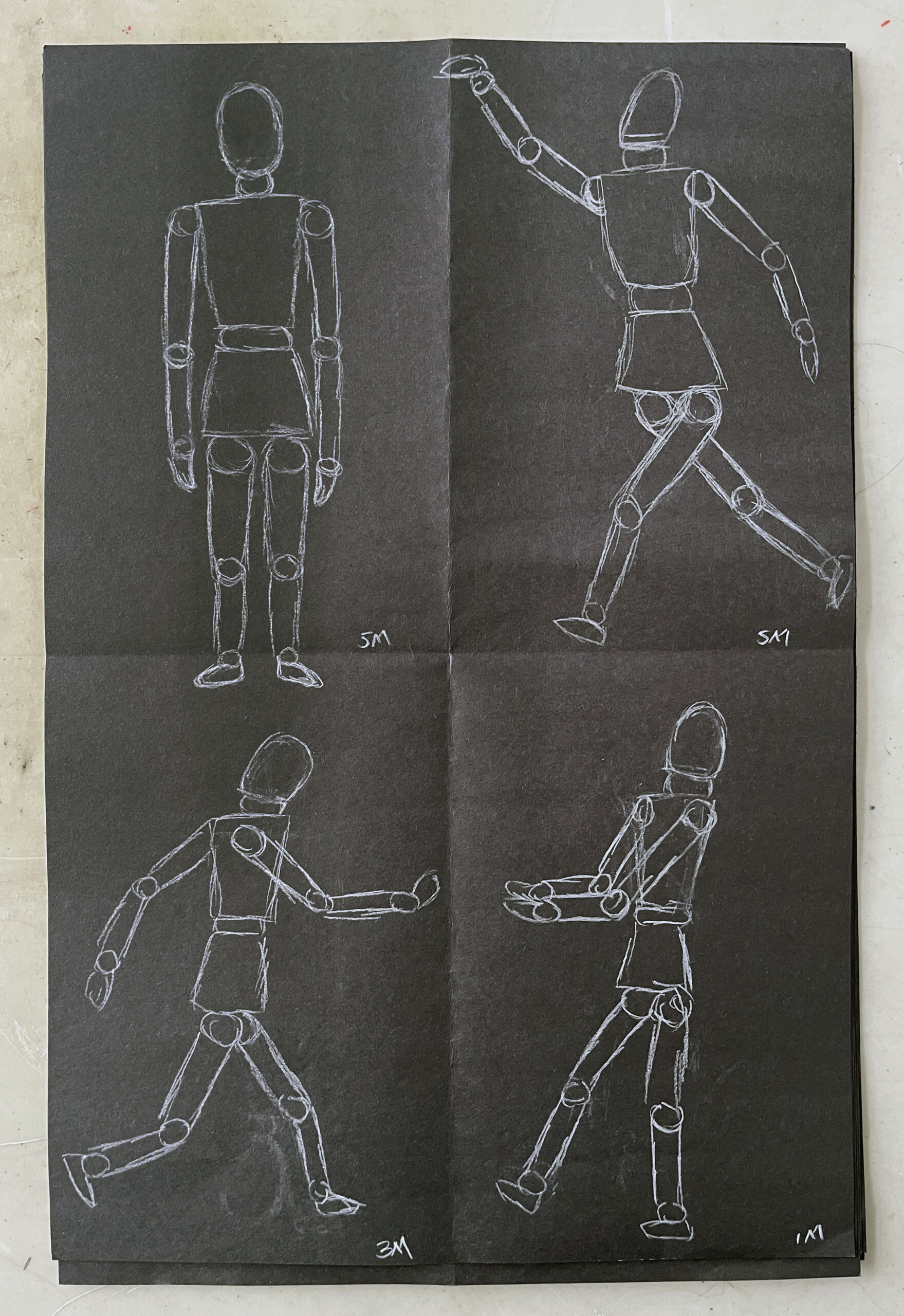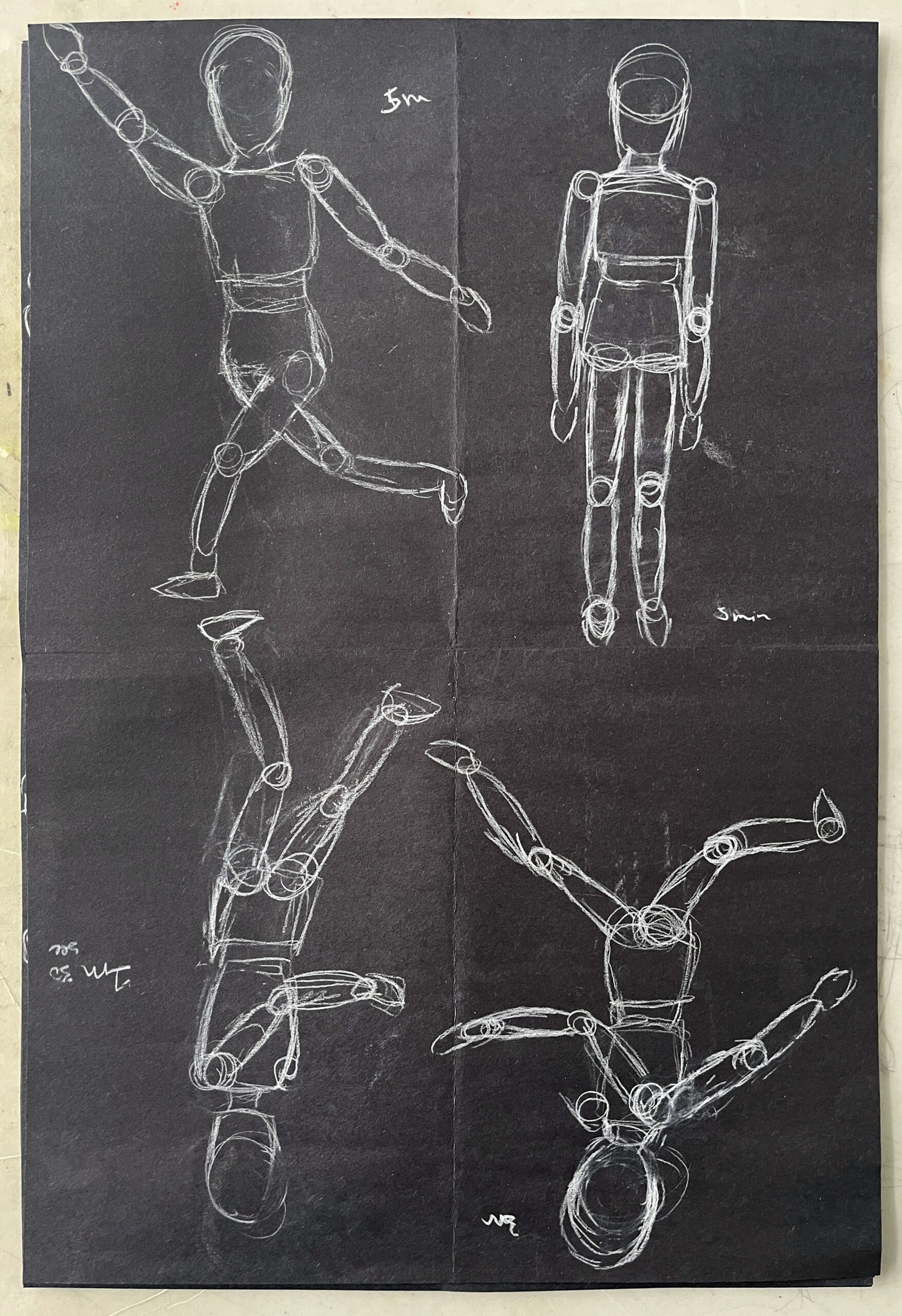Overview
Working from observation, students will draw the body in different poses that capture an expressive action or gesture.
Grade Level
6-8
Media
Theme/Big Idea
Artists can use collage techniques to create collagraph prints of someone they admire.
Essential Questions
- How can we honor someone through our artwork?
- How can we represent the unique qualities of an individual through full-body portraiture?
Case Studies



Materials and Tools
- White charcoal pencil, black paper (12 x 18″ if possible, or 9 x 12″, multiple sheets per student)
- Image of mannequin in different poses, Slide 23
- Gerone Spruill. Untitled, Slide 12
- Alice Wong. Untitled, Slide 13
- Byron Smith. Model on Red Background, Slide 14
- Ron Veasy. Fast Break, Slide 15
- John Smith. Bus Ride, Slide 16
Objectives
Students will:
- Identify different poses that show the personality or action associated with the person in their portrait.
- Draw the body in different poses, noticing shapes, proportions, and where the body bends.
Activities
Note: Teacher language is italicized.
Introduction: Close Looking (10 minutes)
In our last class, we drew portraits of people we admire focusing on facial features, expressions, and details. Today, we’re going to draw portraits again, but we’re going to focus on poses that capture a specific action or gesture.
- What is a pose? Can everyone make a quick pose where you are?
- What does the pose you made express?
To continue exploring poses, let’s look at an artwork by Gerone Spruill.

Describe the poses you see in this artwork.
- What do you think the characters are doing?
- What does this tell you about who they are?
Poses show action and movement. The position of the body in a specific pose implies motion. Poses can express someone’s personality or something they like to do.
Try a few different poses at your spot or with a partner. Where does your body bend for each pose?

Today, you’re going to draw four different poses that you think express the personality or an action related to the person in your portrait. How can a pose show more about what you admire about this person?
You can find your own photos for reference, or you can use the reference photos of figures in different poses provided. We’re not going to focus on the face today, just the body.
Demonstration (10 minutes)
I’m going to make a sketch to demonstrate.
Use an example photo of a person in a pose.
To draw the figure today, we can draw most parts of the body as ovals or rectangles.
As you draw, think aloud about proportion.
Everyone’s body is different. The size relationship between the different parts of a person’s body is called proportion. Let’s explore the proportions of our own body. Is your head larger or smaller than your torso? Are your legs longer or shorter than your torso? Are your arms longer or shorter than your torso? What parts of your body can bend?
Draw students’ attention back to the reference photo. Where does the body bend in this pose (neck, elbow, hips, knees, feet)?
Demonstrate drawing two poses, emphasizing anything different that you notice in the second pose.
Group or Independent Work (25 minutes)
What poses will you choose for your subject? How does the pose you chose communicate something you admire about this person?
How does the body bend and change with each pose? If you’re not sure, try it out yourself or ask a friend to model it.
Have students fold two 9” x 12” papers in half, or one 12” x 18” paper into four rectangles. In each of the four boxes, have students draw a different action pose, focusing on loosely drawing shapes of the body in different poses without adding details.
Remind students just to focus on the shapes. After half the time has passed, encourage them to move on to a second drawing.
Reflection Questions for Discussion (10 minutes)
Share your work with a person sitting near you. Talk about the following questions:
- Which pose do you think best shows the personality or an action related to the person you chose?
- What does that pose express about what you admire about them?
- What did you notice about how the shapes of the body changed in that pose?
After students reflect with their partners, have some students share their partner’s work and their answers to these questions with the whole class.
Vocabulary
Pose, movement
Resources
Alice Wong via Creative Growth
John Smith via ADA 30 Virtual Exhibition, “The Journey”
Adaptations
Alternative Ways of Working:
- Students can move their body to try different poses
- Students can work on larger or smaller paper
- Students can use adapted drawing tools—thick oil pastels, markers, etc.
- Students can use iPads or other technology to draw
- Instead of drawing, students can arrange pre-cut ovals and rectangles to show different poses
Extensions
Sketchbook:
Try drawing the subject of your portrait again in the pose you chose, but this time try drawing them wearing clothing. What kind of outfit do you think best expresses what you admire about this person? How will their clothing change the pose you chose? You can find a photo for reference or imagine an outfit for them.
NYC Blueprint Strands Addressed
#1 Artmaking
#2 Developing Visual Arts Literacy
#3 Making Connections through Visual Arts

